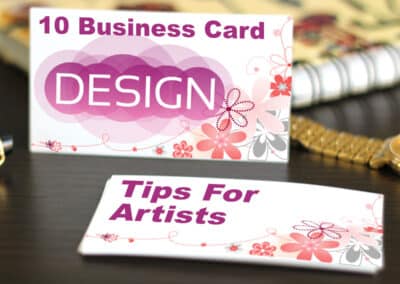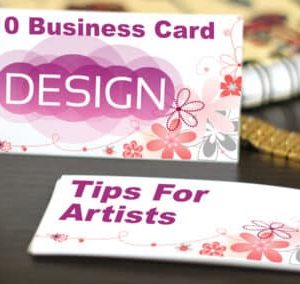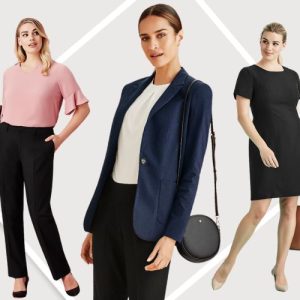

Need an easy way to promote your artwork and connect with potential clients? Artist business cards are a great way to do just that.
Editor’s Note: Artist business cards have become increasingly important in today’s digital age, as they provide a tangible way for artists to showcase their work and connect with potential clients.
To help you create the perfect artist business card, we’ve put together this guide that covers everything you need to know, from design tips to printing options.
| Key Differences | Key Takeaways |
|---|---|
| Design | Your business card should be visually appealing and reflect your artistic style. |
| Content | Include essential information like your name, contact information, and website. |
| Printing | Choose a high-quality printing option that will make your business card look its best. |
With a little planning and effort, you can create artist business cards that will help you promote your work and grow your business.
Artist Business Cards
Artist business cards are an essential tool for any artist who wants to promote their work and connect with potential clients. Here are 10 key aspects of artist business cards to consider:
- Design: Your business card should be visually appealing and reflect your artistic style.
- Content: Include essential information like your name, contact information, and website.
- Printing: Choose a high-quality printing option that will make your business card look its best.
- Size: Standard business card size is 3.5″ x 2″.
- Shape: You can choose from a variety of shapes, including square, rectangle, and circle.
- Paper: Choose a paper stock that is thick and durable.
- Finish: You can choose from a variety of finishes, including matte, glossy, and UV coating.
- Special features: You can add special features to your business card, such as foil stamping or embossing.
- Cost: The cost of your business cards will vary depending on the factors listed above.
- Ordering: You can order your business cards online or from a local print shop.
When designing your artist business cards, it is important to consider your target audience. If you are targeting other artists, you may want to include more information about your artistic process or style. If you are targeting potential clients, you may want to include more information about your services and pricing.
No matter who your target audience is, your artist business cards should be a reflection of your unique artistic style. By following the tips above, you can create business cards that will help you promote your work and grow your business.
Design
The design of your artist business card is one of the most important aspects to consider. After all, this is your chance to make a great first impression on potential clients and customers. Your business card should be visually appealing and reflect your artistic style. This means using high-quality images, fonts, and colors that are consistent with your brand.
For example, if you are a painter, you might want to use a photo of your artwork on your business card. Or, if you are a graphic designer, you might want to use a design that showcases your skills. No matter what your artistic style is, make sure that it is reflected in the design of your business card.
Suggested read: Unveiling the Secrets of Realtor Business Cards: A Guide to Success
Here are some additional tips for designing your artist business card:
- Use high-quality images and fonts.
- Choose colors that are consistent with your brand.
- Make sure your business card is easy to read and understand.
- Consider using a professional printing service to ensure that your business cards are printed to the highest quality.
By following these tips, you can create artist business cards that will help you promote your work and grow your business.
Content
The content of your artist business card is just as important as the design. After all, this is the information that potential clients and customers will use to contact you. Make sure to include all of the essential information, such as:
- Your name: This should be the first thing that people see on your business card.
- Contact information: This includes your phone number, email address, and website. Make sure that this information is easy to read and understand.
In addition to the essential information, you may also want to include other information on your business card, such as:
- A brief description of your work: This is a great way to give potential clients and customers a quick overview of what you do.
- A link to your portfolio: This is a great way to showcase your work and give potential clients and customers a better idea of your style.
No matter what information you choose to include on your artist business card, make sure that it is clear, concise, and easy to read. You want potential clients and customers to be able to quickly and easily find the information they need.
By including all of the essential information, you can create artist business cards that will help you promote your work and grow your business.
Printing
When it comes to artist business cards, printing is an essential consideration. The quality of your printing will directly impact the overall look and feel of your cards, so it’s important to choose a printing option that will make your business cards look their best.
- Digital printing: Digital printing is a great option for short runs of business cards. It’s a relatively inexpensive option, and it produces high-quality results.
- Offset printing: Offset printing is a good option for large runs of business cards. It’s a more expensive option than digital printing, but it produces the highest quality results.
- Letterpress printing: Letterpress printing is a traditional printing method that produces beautiful, high-quality results. It’s a more expensive option than digital or offset printing, but it can give your business cards a unique, sophisticated look.
No matter which printing option you choose, make sure to choose a reputable printer who can provide you with high-quality results. Your business cards are a reflection of your brand, so it’s important to make sure that they look their best.
Size
When it comes to artist business cards, size matters. The standard business card size is 3.5″ x 2″, and there are several reasons why this is the ideal size.
- Portability: Standard-sized business cards are easy to carry around in a wallet or pocket, making them convenient for artists to hand out at networking events or art shows.
- Affordability: Standard-sized business cards are relatively inexpensive to print, which is important for artists who may be on a budget.
- Compatibility: Standard-sized business cards are compatible with most business card holders and scanners, making it easy for potential clients to store and organize your information.
Of course, there are some cases where you may want to use a different size for your artist business cards. For example, if you are creating a particularly large or elaborate design, you may want to use a larger size to showcase your work. However, in most cases, the standard business card size is the best option.
Suggested read: Unlock the Secrets of Irresistible Lawn Mowing Business Cards
Shape
The shape of your artist business card is an important consideration, as it can impact the overall look and feel of your card. The most common shapes for business cards are square, rectangle, and circle, but you can also choose from a variety of other shapes, such as oval, triangle, or die-cut.
When choosing a shape for your business card, it is important to consider your target audience and the overallyou want to project. For example, a square or rectangular business card may be a good choice if you want to create a professional and traditional look. A circle or oval business card may be a good choice if you want to create a more creative and unique look.
No matter what shape you choose, make sure that it is consistent with your brand and the overall design of your business card. Your business card should be a reflection of your unique artistic style, and the shape you choose should help to communicate that style to potential clients and customers.
Here are some additional tips for choosing the shape of your artist business card:
- Consider the size of your business card. A larger business card may be able to accommodate a more elaborate shape, while a smaller business card may be better suited for a simpler shape.
- Think about the type of printing you will be using. Some printing methods may be better suited for certain shapes than others.
- Get feedback from other artists or potential clients. This can help you to make sure that you are choosing a shape that is both visually appealing and effective.
Paper
The paper you choose for your artist business cards is an important consideration, as it will impact the overall look, feel, and durability of your cards. A thick and durable paper stock will ensure that your cards are able to withstand the wear and tear of being handled and carried around. This is especially important for artists who frequently attend networking events or art shows, as their business cards may be handled by many different people.
In addition to durability, the paper you choose should also be consistent with your brand and the overall design of your business card. For example, if you are creating a high-end, luxury brand, you may want to choose a thick, textured paper stock. If you are creating a more playful or creative brand, you may want to choose a brightly colored or patterned paper stock.
No matter what paper stock you choose, make sure that it is high-quality and will make your business cards look their best. Your business cards are a reflection of your brand, so it is important to make sure that they are made from high-quality materials.
Here are some additional tips for choosing the paper stock for your artist business cards:
- Consider the thickness of the paper. A thicker paper stock will be more durable and will make your business cards feel more substantial.
- Consider the texture of the paper. A textured paper stock can add a unique and sophisticated look to your business cards.
- Consider the color of the paper. The color of the paper should be consistent with your brand and the overall design of your business card.
- Get feedback from other artists or potential clients. This can help you to make sure that you are choosing a paper stock that is both visually appealing and effective.
Finish
The finish of your artist business cards is an important consideration, as it can impact the overall look, feel, and durability of your cards. A well-chosen finish can enhance the design of your cards and make them more resistant to wear and tear.
- Matte Finish:A matte finish is a non-glossy finish that gives your business cards a sophisticated and professional look. It is a good choice for cards that will be frequently handled, as it is less likely to show fingerprints and smudges.
- Glossy Finish:A glossy finish gives your business cards a shiny, high-impact look. It is a good choice for cards that you want to stand out from the crowd. However, it is important to note that glossy finishes are more likely to show fingerprints and smudges.
- UV Coating:A UV coating is a clear, protective coating that can be applied to your business cards to make them more durable and resistant to fading. It is a good choice for cards that will be exposed to a lot of wear and tear.
When choosing a finish for your artist business cards, it is important to consider the overall design of your cards and the impression you want to make. A well-chosen finish can help your cards make a lasting impression on potential clients and customers.
Suggested read: Unveiling the Secrets to Unforgettable Hair Stylist Business Cards
Special features
Special features can add a touch of luxury and sophistication to your artist business cards, making them more memorable and impressive. Foil stamping is a process that uses heat and pressure to apply a thin layer of metallic foil to your cards, creating a raised, shiny design. Embossing is a process that uses pressure to create a raised design on your cards, giving them a unique and tactile quality.
Both foil stamping and embossing can be used to add your logo, name, or other important information to your business cards. They can also be used to create decorative borders or accents. When choosing special features for your artist business cards, it is important to consider your overall design and the impression you want to make. Special features can help your cards stand out from the crowd and make a lasting impression on potential clients.
Here are some examples of how artists have used special features on their business cards:
- A painter might use foil stamping to add a metallic accent to their business cards, creating a luxurious and sophisticated look.
- A sculptor might use embossing to create a raised design of their artwork on their business cards, giving them a unique and tactile quality.
- A graphic designer might use a combination of foil stamping and embossing to create a visually striking and memorable business card that showcases their skills.
Special features can be a great way to add personality and style to your artist business cards. When used effectively, they can help you create cards that are both visually appealing and memorable.
Cost
The cost of artist business cards can vary significantly depending on a number of factors, including the design, printing method, paper stock, and special features.
- Design: The more complex the design of your business card, the more it will cost to print. This is because complex designs require more time and effort to produce.
- Printing method: Digital printing is the most affordable printing method, but it is not as high-quality as offset printing. Offset printing is more expensive, but it produces higher-quality results.
- Paper stock: The thicker and more durable the paper stock, the more it will cost. This is because thicker paper stock is more expensive to produce.
- Special features: Special features, such as foil stamping and embossing, can add to the cost of your business cards. This is because these features require additional time and effort to produce.
When budgeting for your artist business cards, it is important to consider all of these factors. By carefully considering your design, printing method, paper stock, and special features, you can create business cards that are both affordable and effective.
Ordering
Ordering your artist business cards is a crucial step in promoting your work and connecting with potential clients. There are two main options for ordering business cards: online or from a local print shop.
Ordering online is a convenient and affordable option. There are many websites that offer business card printing services, and you can often find discounts and coupons for online orders. However, it is important to do your research before ordering online, as not all websites are created equal. Make sure to read reviews and compare prices before placing an order.
Ordering from a local print shop is a good option if you want to work with a professional printer and have more control over the quality of your business cards. Local print shops can also provide you with advice and recommendations on paper stock, design, and other aspects of your business cards. However, ordering from a local print shop is often more expensive than ordering online.
No matter how you choose to order your business cards, it is important to make sure that you are happy with the quality of the finished product. Your business cards are a reflection of your brand, so it is important to make sure that they are made from high-quality materials and that they are printed to your satisfaction.
Suggested read: Unleash the Power of Construction Company Business Cards: Uncover Hidden Gems and Insights
| Ordering Method | Pros | Cons |
|---|---|---|
| Online | Convenient, affordable, many options | Less control over quality, need to do research |
| Local print shop | Professional advice, more control over quality | More expensive, less convenient |
FAQs about Artist Business Cards
Artist business cards are an essential marketing tool for any artist who wants to promote their work and connect with potential clients. Here are some frequently asked questions about artist business cards:
Question 1: What are the most important elements to include on an artist business card?
Answer: The most important elements to include on an artist business card are your name, contact information, and website. You may also want to include a brief description of your work, a link to your portfolio, or a QR code that links to your website.
Question 2: What is the best size for an artist business card?
Answer: The standard size for an artist business card is 3.5″ x 2″. This size is convenient and easy to carry around, and it is also compatible with most business card holders and scanners.
Question 3: What type of paper should I use for my artist business cards?
Answer: The type of paper you use for your artist business cards will depend on your budget and the desired look and feel of your cards. However, it is important to choose a thick and durable paper stock that will withstand wear and tear.
Question 4: What is the best way to design my artist business cards?
Answer: The best way to design your artist business cards is to choose a design that is consistent with your brand and the overall style of your work. You may want to use high-quality images, fonts, and colors that reflect your artistic style.
Question 5: Where can I order artist business cards?
Answer: You can order artist business cards online or from a local print shop. Ordering online is a convenient and affordable option, but ordering from a local print shop gives you more control over the quality of your cards.
Question 6: How much do artist business cards cost?
Answer: The cost of artist business cards will vary depending on the factors listed above. However, you can expect to pay anywhere from $10 to $100 for a set of 500 cards.
By following these tips, you can create artist business cards that will help you promote your work and grow your business.
Tips for Creating Effective Artist Business Cards
Your artist business cards are an important marketing tool, so it’s important to make sure that they are well-designed and informative. Here are a few tips to help you create effective artist business cards:
Tip 1: Use high-quality images and fonts.
The images and fonts you use on your business cards should be high-quality and consistent with your brand. Avoid using blurry or pixelated images, and choose fonts that are easy to read and visually appealing.
Tip 2: Include all of the essential information.
Your business cards should include your name, contact information, and website. You may also want to include a brief description of your work or a link to your portfolio.
Tip 3: Choose the right size and shape for your business cards.
The standard size for business cards is 3.5″ x 2″, but you can also choose other sizes and shapes. Consider the size and shape of your business cards when choosing a design.
Tip 4: Use a durable paper stock.
Your business cards should be made from a durable paper stock that will withstand wear and tear. This will help to ensure that your cards look their best for as long as possible.
Tip 5: Get feedback from other artists or potential clients.
Once you have designed your business cards, get feedback from other artists or potential clients. This will help you to make sure that your cards are effective and that they accurately represent your work.
By following these tips, you can create effective artist business cards that will help you to promote your work and grow your business.
Summary of key takeaways or benefits:
- High-quality images and fonts will make your business cards look professional and visually appealing.
- Including all of the essential information will help potential clients to contact you and learn more about your work.
- Choosing the right size and shape for your business cards will help to ensure that they are easy to carry and store.
- Using a durable paper stock will help your business cards to withstand wear and tear.
- Getting feedback from other artists or potential clients will help you to create business cards that are effective and that accurately represent your work.
Transition to the article’s conclusion:
By following these tips, you can create effective artist business cards that will help you to promote your work and grow your business. So what are you waiting for? Get started today!
Conclusion
In today’s digital age, it is more important than ever for artists to have a strong online presence. However, that doesn’t mean that print marketing is dead. In fact, artist business cards can be a powerful marketing tool, allowing you to promote your work and connect with potential clients in person.
By following the tips in this article, you can create effective artist business cards that will help you to stand out from the competition and grow your business. So what are you waiting for? Get started today!
Youtube Video:






